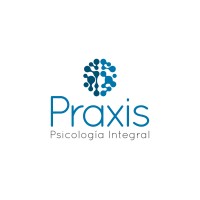
The Effect of Emotions on the Heart 09-11-2018
By: Anahad O’connor
A century ago, scientist Karl Pearson had a peculiar find while observing gravestones in cemeteries: spouses usually died one year after the other.
Although this was not much discussed at the time, studies show that stress and hopelessness can significantly affect health, especially heart health. One of the clearest examples is takotsubo cardiomyopathy, nicknamed broken heart syndrome, in which the death of a couple, financial concerns or some other emotional event weakens the muscle with symptoms similar to those of a heart attack. The emotional weight makes the heart look like a Japanese vessel called takotsubo: a wide base and a narrow neck.
That link between our emotions and our heart health is the theme of Dr. Sandeep Jauhar's book - The Heart: A History. The cardiologist studies the history of cardiovascular medicine and technological advances in it, from open-heart surgery to the development of artificial hearts. Although these cardiac innovations have been remarkable, Jauhar argues that cardiological studies need to focus more on the emotional factors that can influence the development of heart conditions, such as living in poverty, work-related stress, or unhappy love and family relationships.
“I think technological advances will continue,” he said. “But the great unexplored frontier is to devote more resources to reviewing the intersection of the emotional heart and the biological heart.” Jauhar's interest in the subject arose with his own family history of heart disease, which resulted in the death of several family members. As a child, he heard stories like his grandfather's, who died unexpectedly at age 57 from cardiac arrest after running into a black cobra in India. Since then, The Heart has become both fascinating and terrifying for Jauhar, even more so when he was detected with arterial blockages despite his life of regular exercise and healthy eating. “I imagined with fear how the heart was the executioner of men in its fullness,” he said.
The heart is both a relatively simple biological machine and a vital organ that many cultures think harbors the soul. It is a symbol of romance, sadness, sincerity, fear and even courage. The heart, whose name comes from the Latin cor, is a pump that circulates blood; the only organ that can propel itself, with an average of three billion pulses during the life of a person and with the ability to empty the contents of a pool within a week.
In the book, Jauhar tells the story of the first intrepid doctors who pioneered cardiovascular operations in the late 19th century, who began using thread and needle to repair wounds before quickly suturing to prevent the patient from bleeding out. Other more complicated procedures required the development of specialized machinery; surgeons needed an apparatus that could do the heart's work so that they could temporarily stop it to repair more complicated issues, such as birth defects and chronic problems.
Dr. C. Walton Lillehei developed controlled cross circulation, a procedure in which the patient was connected to a second person whose heart and lungs pumped and oxygenated blood during late interventions (Lillehei practiced with dogs before using it in humans, in 1954).
Some of Lillehei's patients survived; others developed infections and various complications. But his work allowed the invention of the heart-lung machine, or extracorporeal pump apparatus, which is now used in more than a million global operations every year. Since then, many more procedures have emerged, such as bypass, and implanted devices.
That is, cardiovascular medicine has developed hastily, although today there are not enough studies on the role of emotional health, according to Jauhar. The doctor talks about the first major study, the Framingham, conducted in the United States since 1948. With this, important risk factors such as cholesterol level, blood pressure and smoking were identified. Researchers initially considered reviewing psychosocial determinants, but ultimately focused on easier-to-measure issues.
“That's where the risk factors we know and deal with came from,” Jauhar said. “What they eliminated from the style were the themes of emotional dysfunction or couples' health.”
That was a mistake, says the doctor. Since then, other studies have shown that people who feel isolated or suffer from chronic stress due to work or their relationships are more likely to have cardiac arrest and stroke. Jauhar now urges health authorities to consider emotional stress as a risk factor for heart disease. However, it is easier to focus on cholesterol.
In fact, some studies point out that doctors give their patients an average of eleven seconds to explain why they are consulting before interrupting them. Since writing the book, Jauhar has valued more the fact that patients can talk about the issues that afflict them to better understand their emotional lives. He has also tried to encourage new habits to reduce stress, such as yoga and meditation. He exercises daily, spends more time with his children, and relates more to his patients since he discovered his own heart condition.
“I was so focused on competing for accomplishments that I was actually putting myself in a very stressful position,” he said. “Now I think about how to live a little healthier, to be more relaxed. I also have better ties to my patients and their fears about their hearts. ”
To view an interview related to the topic:

